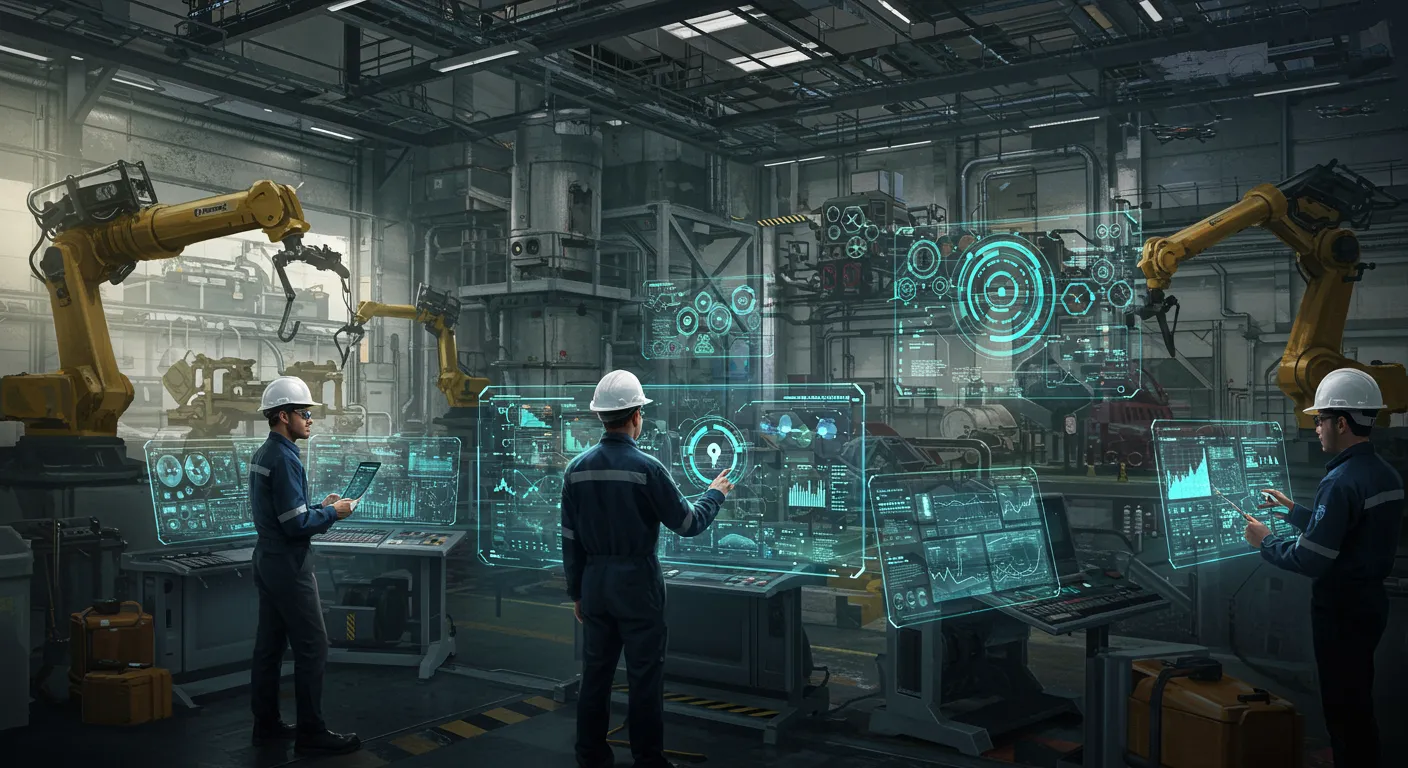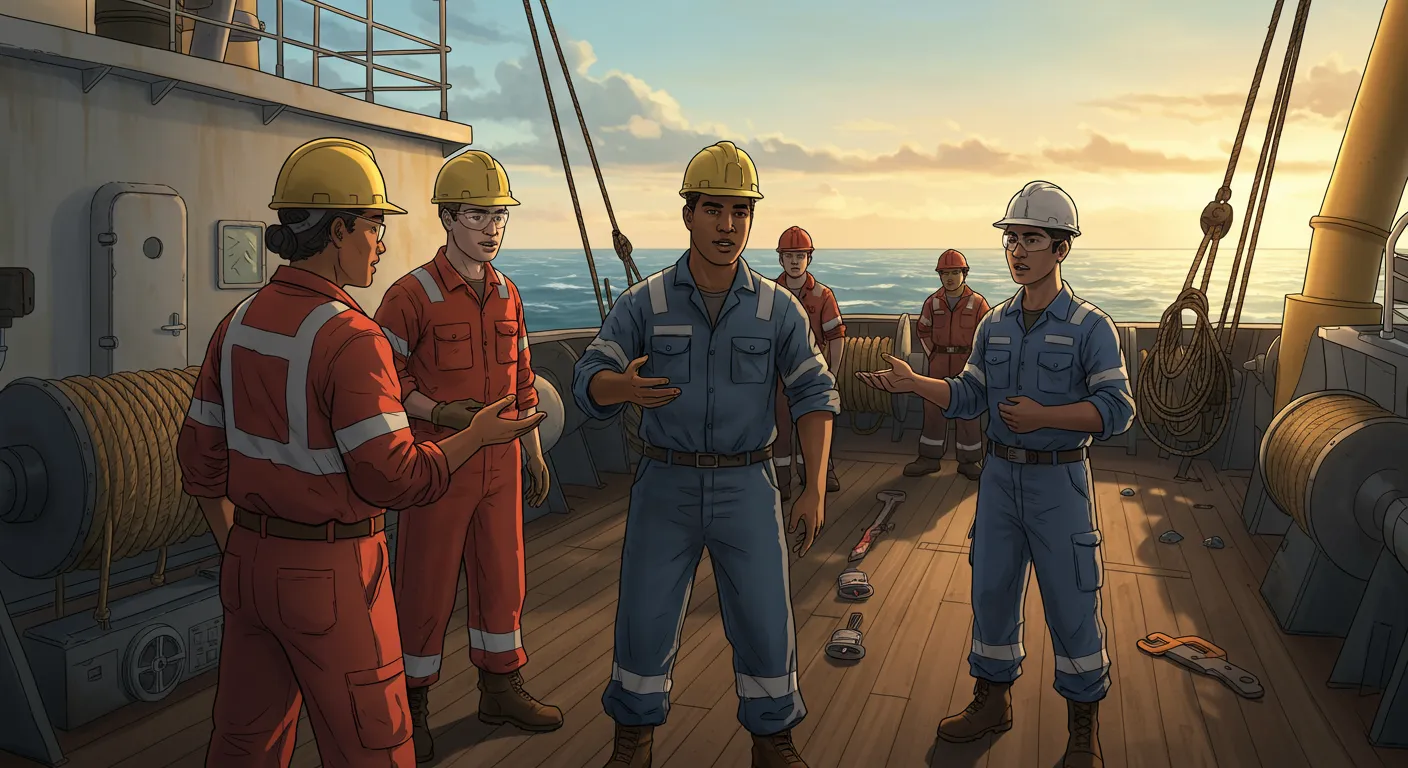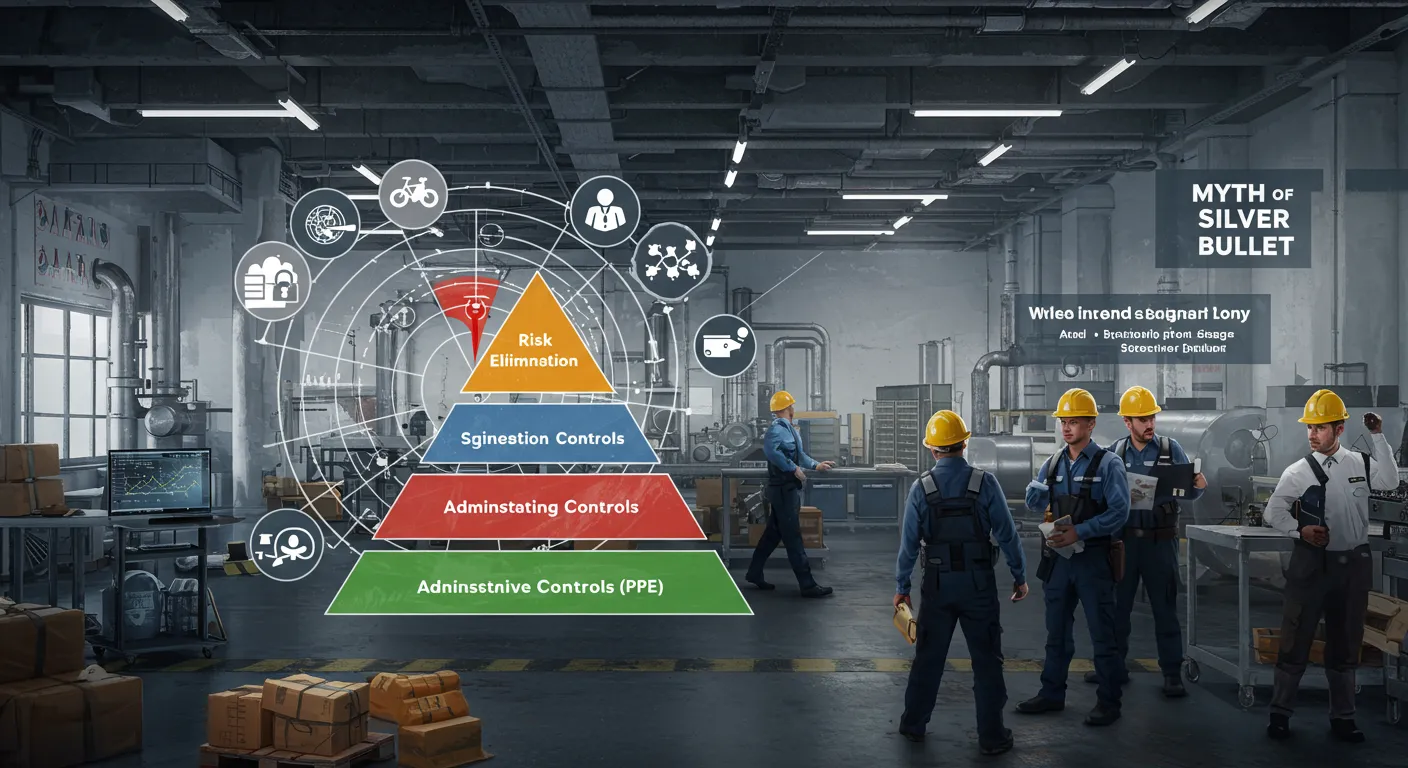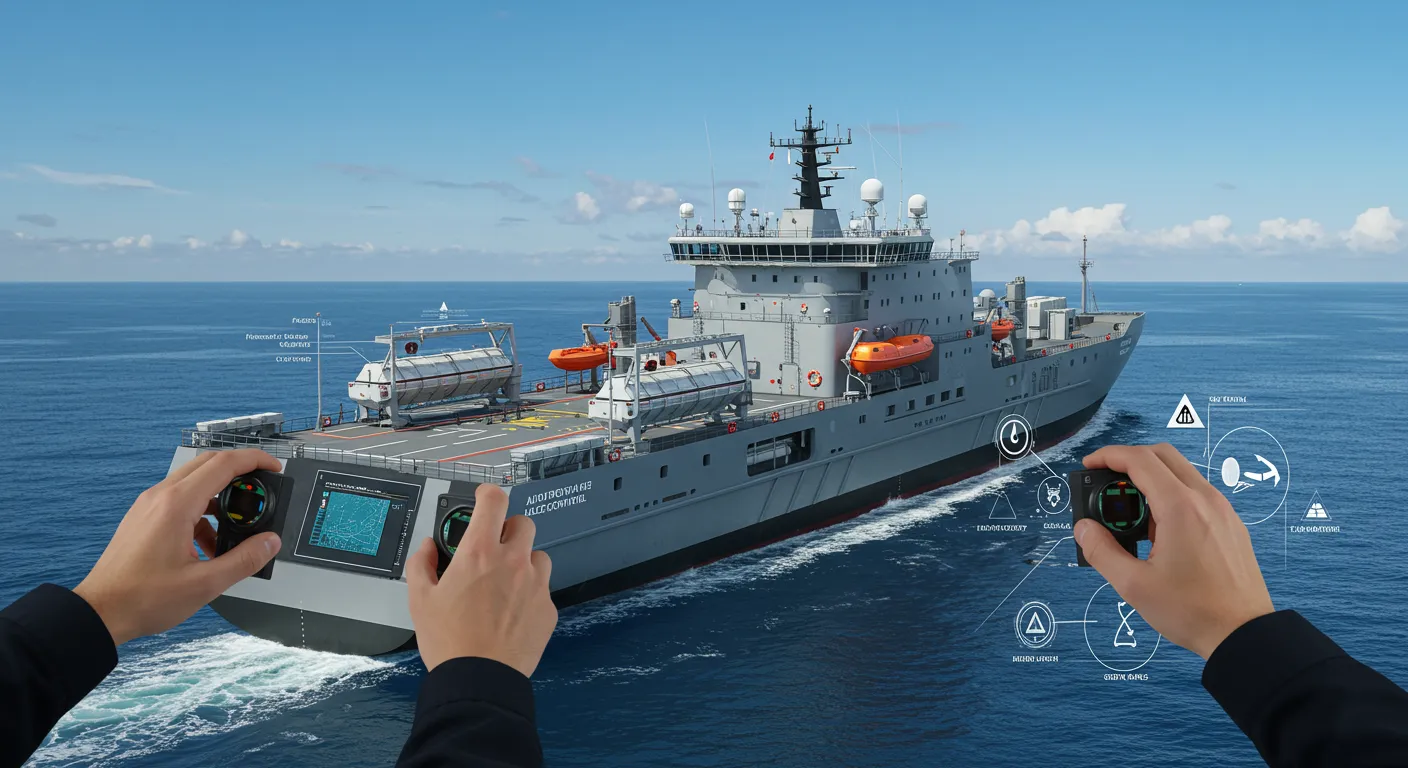Beyond Compliance: How Proactive Hazard Control Transforms Maritime Safety (And My Hands-On Lessons at Sea)
The first time I heard "Stop Work Authority" on a rolling deck, I’ll admit—a little part of me bristled. Who gives a twenty-year-old cadet that much power? Turns out, that single phrase symbolizes one of the boldest changes in how we approach maritime safety: not as a box-ticking exercise, but as a web of trust and constant vigilance. This isn’t your grandfather’s rulebook—it’s a living system honed by hard-learned lessons (and, yes, the occasional near-miss with a wrench slipping just a little too close to someone’s head). Welcome aboard as we navigate the wild world of proactive hazard control, from deck plates to the bridge.
The Awakening: Why Proactive Hazard Control Changed the Game
I’ll never forget the day I realized that safety at sea isn’t just about following rules—it’s about seeing hazards before they become headlines. Early in my maritime career, I was like many others: I trusted the checklists, ticked the boxes, and assumed that if I did everything “by the book,” I’d be safe. But the ocean has a way of humbling you—and teaching you that being reactive just isn’t enough.
From Reacting to Preventing: Hard Lessons Learned
In those first years, I saw what happens when crews only respond after something goes wrong. There was the time a loose mooring line snapped back, narrowly missing a deckhand. Or the day a simple oil spill turned into a frantic scramble because no one had thought to check the hose fittings beforehand. Each incident left more than just paperwork; it left bruised egos, shaken confidence, and sometimes, sunburned hands that served as reminders of what we missed.
Research shows that most maritime incidents are preventable. The Risk Tools Handbook emphasizes that structured risk assessment—done before the job—can catch hazards that might otherwise slip by. But back then, we were stuck in a cycle: wait for something to go wrong, then fix it. The cost? Far too high, both in human and operational terms.
Proactive Hazard Control: More Than a Policy
The real shift happened when I started to see hazard control as a daily philosophy, not just a set of policy lines in a manual. It’s easy to read about Stop Work Authority or the Take 5 risk assessment and think, “That’s for the safety officer.” But on deck, with the wind up and the work piling on, it’s everyone’s job. Proactive hazard control means asking, “What could go wrong?” before you even pick up a tool.
I learned that toolbox talks and Job Hazard Analysis (JHA) aren’t just paperwork—they’re conversations that can save fingers, or lives. The Permit to Work (PTW) system, for example, isn’t just bureaucracy; it’s a safeguard, especially when entering enclosed spaces or handling hazardous energy. Research indicates that when these tools are used proactively, incidents drop and confidence rises.
My First ‘Hazard Eye’ Moment
My awakening came one morning on deck. I was about to help rig a gangway when I noticed a frayed line—something I might have missed in my rush. For a split second, I hesitated. Should I speak up? It felt awkward, but I remembered a quote from a seasoned chief mate:
“If you see something, say something. It’s not just your safety—it’s everyone’s.”
I called a stop, and sure enough, the line was ready to give way. That moment changed how I saw my role. Suddenly, proactive hazard control wasn’t just theory—it was real, and it was personal.
Since then, I’ve learned that most incidents aren’t accidents—they’re warnings we ignored. Every bruise, every sunburned hand, is a lesson in what could have been prevented. And every time I trust my ‘hazard eye,’ I know I’m not just following rules—I’m changing the game.

Empowering the Crew: Stop Work Authority & the New Voice of the Deckhand
One of the most significant shifts I’ve witnessed in maritime safety is the rise of Stop Work Authority (SWA). It’s not just a policy printed in the safety manual—it's a real, practical tool that every seafarer, from the most seasoned officer to the greenest deckhand, is expected to use. And yes, that means even the new hire, fresh out of training, has the power to halt operations if something doesn’t look or feel right.
Research shows that empowering all crew members with SWA is a cornerstone of proactive hazard control. The Risk Tools Handbook highlights that when every individual feels responsible and authorized to act, the likelihood of catching hazards before they escalate increases dramatically. It’s a simple idea, but it’s transformative: safety isn’t just the responsibility of the captain or the safety officer—it’s everyone’s job, every minute of every shift.
When Speaking Up Saved the Day
I’ll never forget a particular morning on deck. We were prepping for a routine maintenance job—one we’d done dozens of times before. But this time, a contractor, new to our vessel, noticed something off with the rigging. He hesitated, then called a stop. At first, there was a ripple of frustration. We were on a tight schedule. But as we double-checked, we found a frayed sling that could have snapped under load. That call, from someone barely known to the crew, averted what could have been a serious accident. It was a powerful reminder: sometimes, the freshest eyes spot what the rest of us might overlook.
JHA and PTW: More Than Just Paperwork?
Job Hazard Analysis (JHA) and Permit to Work (PTW) systems are often seen as paperwork hurdles. But in practice, they’re much more. These tools, when used properly, empower the crew by making risk assessment a shared, visible process. The Take 5 risk assessment—quickly pausing to consider hazards before starting a task—has become second nature for many of us. It’s not about ticking boxes; it’s about giving everyone a voice and a chance to speak up before something goes wrong.
Studies indicate that when JHA and PTW are treated as living processes, rather than bureaucratic chores, they foster a sense of ownership among the crew. Everyone becomes more alert, more engaged, and more likely to intervene if something feels unsafe.
Building a ‘Just Culture’ at Sea
Of course, none of this works without the right culture. In the past, mistakes were often met with blame or silence. Now, the best ships I’ve worked on are moving towards a ‘Just Culture’—where reporting mistakes or near-misses is encouraged, not punished. As one of my mentors used to say, “If we don’t talk about what almost went wrong, we’ll never fix what could go wrong next time.”
By naming mistakes and learning from them, rather than hiding them, we create an environment where everyone feels safe to use their voice. That’s the real power behind Stop Work Authority: it’s not just about stopping work, but about starting conversations that keep us all safer.
Risk Radar: Take 5, Hierarchy of Controls & the Myth of the Silver Bullet
If you’ve ever worked on a ship, you know the drill: the Take 5 card comes out, and suddenly, everyone’s a risk assessor. I’ll admit it—there were days I caught myself daydreaming through a Take 5, pen in hand, mind somewhere between the engine room and the next port. But here’s the thing: those five-minute risk checks, as routine as they seem, have a way of anchoring you to the present. They’re not just paperwork. They’re a pause—a moment to snap out of autopilot and actually see the hazards around you.
Research shows that proactive hazard control is the backbone of maritime safety. The Take 5 process, for example, is designed to be quick and practical. It’s not about ticking boxes; it’s about stopping for a breath and asking, “What could go wrong here?” Over time, these small checks became my personal anchor against complacency. I started to notice things I’d have missed otherwise—a loose handrail, a missing sign, a spill that could turn into a fall. It’s the little stuff that sneaks up on you at sea.
But not all controls are created equal. That’s where the Hierarchy of Controls comes in—a concept that, once I understood it, changed the way I looked at risk. In maritime operations, we’re taught to eliminate hazards first, substitute where we can, engineer out the danger, and only then rely on administrative controls or personal protective equipment (PPE). Yet, so often, I saw PPE treated as the first and last line of defense. It’s easy to reach for gloves or a hard hat and feel safe. But as the Risk Tools Handbook emphasizes, PPE is Plan D, not Plan A. It’s the backup, not the solution.
Let’s be honest: there’s a myth among some mariners that stacking up more controls—more checklists, more gear, more rules—automatically means more safety. But in practice, that’s not always true. Sometimes, piling on controls can create confusion or even a false sense of security. I’ve seen it happen. People get so wrapped up in the paperwork or the gear that they miss the bigger picture. As one seasoned chief engineer once told me, “Safety isn’t about how many boxes you tick. It’s about knowing which box matters most for the job at hand.”
That’s why the best risk radar isn’t just about following procedures. It’s about understanding why those procedures exist—and having the confidence to speak up if something doesn’t feel right. Stop Work Authority, for example, empowers anyone on board to halt operations if they spot an unsafe condition. It’s a reminder that safety isn’t static; it’s a living, breathing part of shipboard life. And sometimes, the most effective control is simply paying attention, trusting your gut, and refusing to let routine dull your senses.
In the end, the real lesson from all those Take 5s and toolbox talks is this: there’s no silver bullet in maritime safety. It’s a mix of vigilance, practical tools, and a willingness to challenge the status quo—one risk check at a time.

Enclosed Spaces, Hidden Traps: The Rules We Never Bend
There’s a certain tension that settles over a crew when the words “enclosed space entry” come up. It’s not just a box-ticking exercise—everyone knows the stories, and most of us have felt the chill that comes with stepping into a tank or hold where the air doesn’t move and the walls seem to close in. The rules around these spaces aren’t just regulations; they’re lifelines. And, honestly, they’re rules we never bend.
Why We Get Twitchy About Oxygen Meters and Standby Persons
Before anyone even thinks about entering an enclosed space, the oxygen meter comes out. I’ve seen seasoned crew members—tough as old rope—pause and double-check readings, even when the numbers look fine. There’s a reason for that. Research shows that oxygen deficiency and toxic atmospheres are leading causes of fatalities in confined spaces at sea. It’s not paranoia; it’s experience. We know that a space can look harmless and still be deadly.
And then there’s the standby person. This isn’t just a formality or a box to tick on the Permit to Work form. The standby is the lifeline, the one who stays alert, radio in hand, eyes on the clock, ready to sound the alarm. I’ve been that person, and I’ve relied on others to watch my back. The trust runs deep, and so does the responsibility. As the Risk Tools Handbook points out, “The Safety Standby Person is the first responder in an emergency and must never leave their post.” It’s a role that demands respect—and vigilance.
Atmosphere Testing Tales: My First Whiff of Shuttle Tank Paranoia
My first real taste of enclosed space anxiety came during a shuttle tank inspection. The tank had been ventilated for hours, the readings were good, and yet, as I lowered myself down, every sense was on high alert. The smell was metallic, sharp, and oddly sweet—a reminder that not everything dangerous can be seen or even detected by our own senses. That’s why we trust the instruments, and why we test, test, and test again. Studies indicate that repeated atmosphere testing, both before and during entry, is crucial for safety. It’s not overkill; it’s survival.
Rescue Plans: Practiced, Debated, Torn Up, and Rehearsed Again
Rescue plans are another area where we never cut corners. We practice them until they’re muscle memory, then we argue about how to make them better, then we practice again. There’s a reason for this relentless rehearsal: in an emergency, there’s no time to think, only to act. The best plans are simple, clear, and known by everyone involved. Toolbox Talks before entry help reinforce the steps and roles, making sure no one is left guessing if things go wrong.
The Role and Responsibility of the Safety Standby Person
Some might see the standby as just a watcher, but in reality, it’s one of the most critical jobs on deck. The standby is the link between the person inside and the rest of the world. They monitor, communicate, and, if needed, initiate rescue. It’s a position that requires confidence, attention, and the authority to stop work if something feels off. Stop Work Authority isn’t just a policy—it’s a culture, and the standby is its frontline defender.
Enclosed spaces are unforgiving. The rules we follow aren’t just for compliance—they’re for coming home safe, every single time.
Lockouts, Lessons, and Lifelines: The Human Side of Energy Control & Communication
When you hear “hazardous energy control” in the maritime world, it’s easy to picture a checklist and a padlock. But out at sea, I’ve learned that real safety isn’t just about locking and leaving. It’s about the art of true isolation—making absolutely sure that every valve, switch, and breaker is not only secured, but that everyone on the team understands what’s at stake. Research shows that hazardous energy control procedures, such as Lockout-Tagout (LOTO), are fundamental to preventing accidental energization during maintenance. But in practice, it’s the human element that makes or breaks these systems.
I remember one particular job where a buddy of mine, frustrated by repeated confusion over who had locked out what, taped a sarcastic note to the lockout box: “If you’re not sure, ask the person with the key!” At first, it got a few laughs, but it also sparked a real conversation. Suddenly, people were double-checking, talking more, and—most importantly—admitting when they weren’t sure. That note did more for our teamwork than any policy memo ever could. It’s a reminder that formal systems only work when backed by informal, honest communication.
Communication on board isn’t just about paperwork or briefings. It’s the toolbox talks before dawn, the quick Task Debriefs after a long shift, and those unexpected “Ah-ha!” moments that hit you at midnight when you realize you almost missed something critical. Toolbox Talk safety meetings, as studies indicate, are effective for ongoing communication and reinforcement of safety practices among maritime crews. But some of the most important exchanges happen in passing—over coffee, or while wrestling with a stubborn valve. These moments build trust, and trust is what keeps people speaking up when it matters most.
Then there are the near-misses. Every seafarer has a story about the time a millimeter made all the difference. I once watched a colleague narrowly avoid a serious injury because someone had taken the time to double-check an isolation point. We debriefed that incident right away, not to assign blame, but to learn. Research shows that learning from near-misses is a proactive approach to improve safety by addressing potential hazards before accidents occur. It’s humbling to realize how close things can come, and how much we rely on each other’s vigilance.
What I’ve come to appreciate is that energy control isn’t just a technical process—it’s a living, breathing system shaped by the people who use it. The best procedures in the world won’t help if the crew isn’t engaged, or if communication breaks down. That’s why, in my experience, the most effective safety cultures are the ones where everyone feels empowered to speak up, ask questions, and—even if it takes a sarcastic note—remind each other that safety is a shared responsibility.

From Rules to Routine: Making Safety Second Nature, One Voyage at a Time
When I first stepped onto a ship, I thought safety was all about paperwork—forms, checklists, and procedures. It didn’t take long to realize I was missing the point. True safety culture isn’t built by forms—it’s built by people. The best procedures in the world won’t save you if the crew isn’t engaged, alert, and willing to speak up. Over time, I saw that safety becomes second nature only when it’s woven into the daily routine, not just tacked on as an afterthought.
One of the most transformative experiences for me was seeing how cross-training and mentorship programs, especially those focused on developing a “Hazard Eye,” could turn rookies into guardians of safety. Research shows that proactive hazard control—spotting and addressing risks before they become incidents—is far more effective than simply reacting to problems. Onboard, we paired new crew members with experienced mentors who didn’t just teach procedures, but encouraged them to question, observe, and think critically about every task. These “Hazard Eye” sessions weren’t always formal. Sometimes, it was a quick chat on deck about why a certain valve was tagged out, or a discussion over coffee about a near-miss. The goal was always the same: to build a mindset where safety isn’t just a rule, but a reflex.
I’ll never forget the day a deck cadet asked a question that changed everything. We were reviewing an enclosed space entry procedure—something we’d done a hundred times. He raised his hand and asked, “Why do we check the atmosphere only at the start? What if something changes while we’re inside?” At first, there was silence. Then, a flurry of discussion. That one question led us to rewrite our Standard Operating Procedure (SOP) to require continuous atmospheric monitoring, not just a single check. It was a powerful reminder that sometimes, the best improvements come from the most unexpected places. As the Risk Tools Handbook and other industry guidelines suggest, learning from near-misses and encouraging open dialogue are key to evolving safety practices.
Turning theory into action isn’t always easy, but it’s essential. We started using appendices and templates—simple checklists, Take 5 risk assessment cards, and Permit to Work forms—to make sure everyone had the tools they needed. These weren’t just bureaucratic hurdles; they were practical guides that helped us translate safety concepts into real-world decisions. Over time, these tools became part of our routine, not because we were told to use them, but because we saw how they kept us safe.
In the end, making safety second nature is about more than compliance. It’s about building trust, encouraging questions, and making sure every crew member feels responsible for themselves and their shipmates. The forms are important, but it’s the people who bring them to life. And sometimes, all it takes is one good question to set a new standard for everyone on board.
TL;DR: Maritime safety isn’t just paperwork—it’s a living, adaptive culture. By embracing proactive hazard control, real-world risk tools, and a bit of humility, we don’t simply survive at sea—we thrive. Trust, training, and the courage to speak up can make every voyage safer than the last.

Comments
Post a Comment